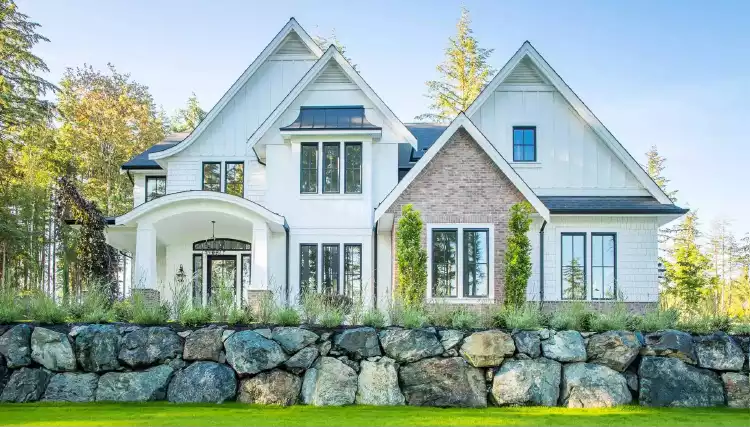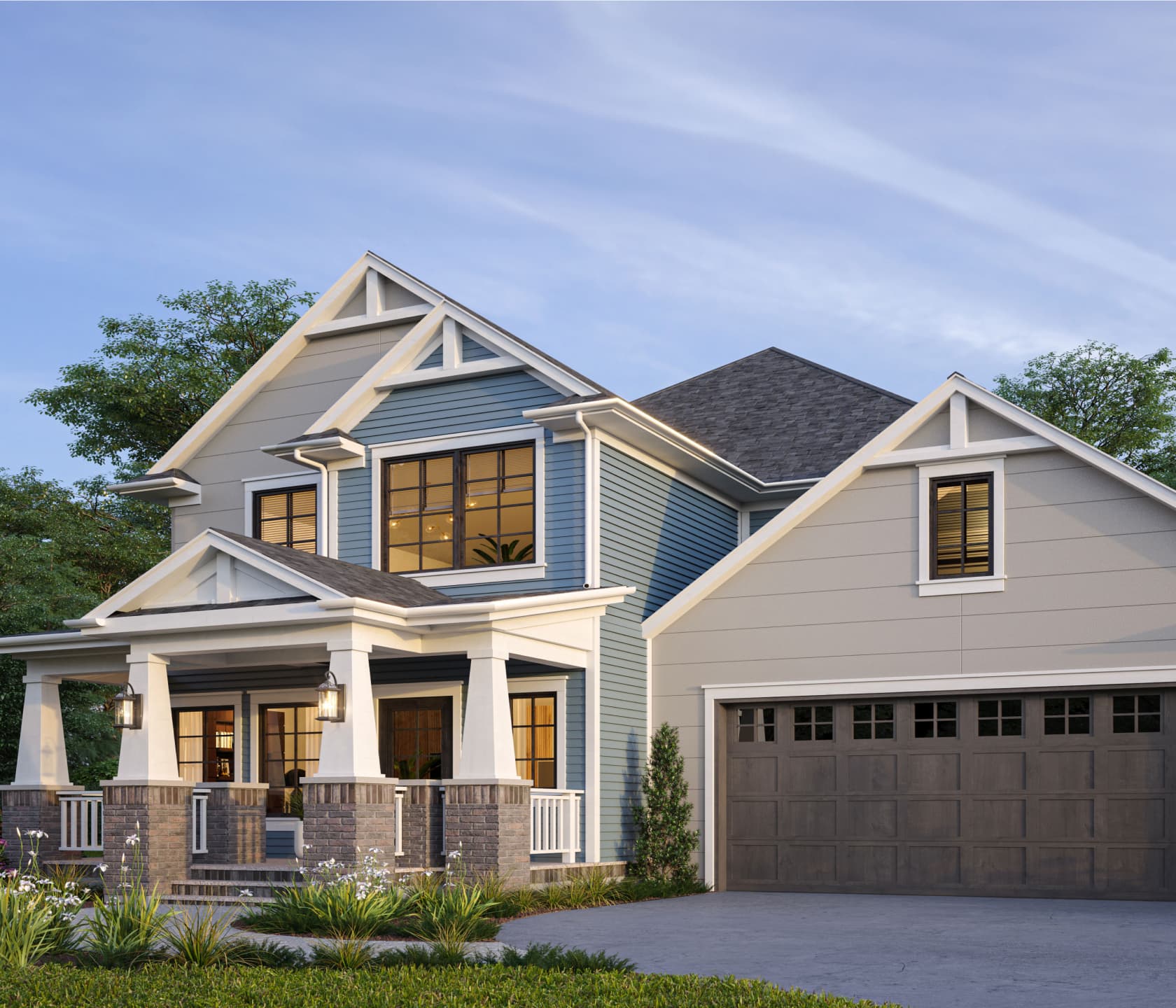The Duty of Arts & & Crafts Architects in Elevating Architectural Solutions in Residential Style
Arts and Crafts architects considerably affect property style with their commitment to craftsmanship and sustainability. They prioritize handmade information and all-natural materials, which enhance both aesthetic appeals and neighborhood identity. By involving customers in the layout procedure, these architects produce unique home that reverberate with individual tastes. This approach raises inquiries regarding the future trajectory of property architecture and its potential effect on area dynamics. craftsman style house. What lies in advance for this ageless design ideology?

The Principles of Arts and Crafts Architecture
The essence of Arts and Crafts architecture depends on its dedication to craftsmanship and simpleness. This building movement arised in the late 19th century as an action to industrialization, emphasizing the worth of handcrafted information and natural products. The principles of Arts and Crafts architecture focus on performance and harmony with the setting. Structures typically include low-pitched roofing systems, vast eaves, and subjected rafters, promoting a feeling of unity with nature.
Artisans played a significant function in this design, commonly integrating attractive aspects like tarnished glass, ceramic tiles, and woodwork, which mirror regional workmanship. The color combination tends to be earthy and subdued, enabling structures to blend effortlessly into their surroundings. Additionally, the design motivates open flooring plans and common rooms, fostering a sense of togetherness. On the whole, the principles of Arts and Crafts architecture celebrate the elegance of simplicity and the significance of human link to both nature and area.

Lasting Practices in Residential Design
While the demand for eco liable living remains to grow, lasting techniques in domestic style have actually gained significant grip amongst architects and homeowners alike. Architects are increasingly integrating energy-efficient modern technologies and lasting products into their designs, aiming to decrease carbon impacts and improve power preservation. Approaches such as easy solar design, environment-friendly roofs, and rainwater harvesting systems are becoming conventional elements of contemporary household architecture.
Furthermore, the selection of in your area sourced products reduces transportation emissions and sustains regional economies. Emphasis on all-natural light and ventilation not only boosts indoor air quality yet likewise reduces dependence on man-made lighting and environment control systems. These sustainable techniques show a commitment to protecting the environment while giving house owners with comfortable, effective space. As recognition of environmental concerns grows, the assimilation of sustainability in domestic layout is poised to come to be a defining attribute of contemporary architecture, assisted by the principles established by Arts and Crafts architects.
Modification and Personalization in Home Style
Customization and personalization in home layout have become vital trends in action to the expanding wish for one-of-a-kind living environments that show specific preferences and lifestyles. House owners increasingly seek to tailor rooms that reverberate with their personal identities, causing an extra meaningful connection with their space. craftsman style house. This activity urges architects to engage clients in the style process, promoting cooperation that guarantees the final outcome symbolizes the house owner's vision
Components such as bespoke formats, custom materials, and tailored finishes allow for a diverse series of expressions in domestic style. Arts and Crafts architects play an essential function in this development, stressing workmanship and high quality. Their emphasis on incorporating creative aspects with performance assurances that each home is not only visually pleasing however additionally distinctively matched to the occupants' needs. Subsequently, this focus on modification boosts the overall household experience, producing areas that are both personal and enduring.

The Effect of Arts and Crafts Architects on Neighborhood Aesthetic Appeals
As neighborhoods develop, the influence of Arts and Crafts architects substantially forms their aesthetic landscape. By emphasizing handmade information, natural products, and standard building techniques, these architects develop homes that reverberate with their surroundings. Their layouts commonly integrate local vegetations, structures, and shades, promoting a sense of consistency between constructed atmospheres and nature.
Moreover, the Arts and Crafts activity promotes area identity via building continuity. By encouraging house owners to adopt comparable design principles, communities develop a cohesive personality that enhances visual allure. This architectural harmony not only enhances the visual experience but likewise instills a sense of satisfaction amongst residents.
In addition, the concentrate on sustainability and craftsmanship in Arts and Crafts architecture straightens with modern values, making these layouts pertinent in contemporary settings. Inevitably, Arts and Crafts hop over to here architects add substantially to the general elegance and social integrity of communities, leaving an enduring influence on their aesthetic legacy.

Future Fads in Arts and Crafts Architecture
With an increasing emphasis on sustainability and customization, future fads in Arts and Crafts architecture are positioned to mix standard workmanship with modern-day advancement - craftsman style house. Architects are likely to prioritize green products, using recovered wood and natural stone to enhance the sustainability of residential layouts. The assimilation of wise home innovation will become commonplace, enabling personalized living experiences without endangering go to the website visual stability
Furthermore, the revival of artisanal strategies will certainly promote a renewed appreciation for handcrafted components, such as bespoke cabinets and custom-made ceramic tile work. Future layouts may also reflect a focus on community-oriented areas, encouraging communication and link amongst locals. Outdoor living locations will certainly get prominence, flawlessly integrating nature right into the home environment. As Arts and Crafts architecture evolves, it will certainly remain to recognize its origins while adapting to contemporary demands, producing unified spaces that show individual worths and way of lives.
Frequently Asked Inquiries
What Inspired the Arts and Crafts Motion in Architecture?
The Arts and Crafts movement in architecture was influenced by a response versus industrialization, highlighting handmade top quality, natural materials, and a go back to typical workmanship, intending to create unified, useful areas that celebrated creativity and individuality.
How Do Arts and Crafts Architects Collaborate With Clients?
Arts and crafts architects work together with clients via open dialogue, prioritizing personal needs and aesthetics. They highlight craftsmanship and sustainability, promoting a collaboration that incorporates the customer's vision with the designer's competence in layout and products.
What Products Are Generally Made Use Of in Arts and Crafts Residences?
Usual products in Arts and Crafts homes consist of all-natural wood, stone, and brick, emphasizing craftsmanship and natural visual appeals. These elements create a cozy, welcoming ambience, showing the motion's commitment to quality and simplicity in layout.
Just how Do Arts and Crafts Styles Improve Indoor Living Spaces?
Arts and Crafts layouts boost indoor living areas by promoting all-natural light, open flooring plans, and handcrafted information. These components promote a warm, welcoming environment, motivating a connection in between homeowners and their atmospheres through thoughtful, useful appearances.
What Are Some Famous Instances of Arts and Crafts Architecture?
Famous examples of Arts and Crafts architecture consist of the Gamble Residence, Greene and Greene's Visit Website work of art in The golden state, and the Robie Residence by Frank Lloyd Wright. These structures showcase handcrafted information and harmony with nature, specifying the movement's significance.